Cadaba aphylla
| Botanical Name | Cadaba aphylla |
|||||||||||
| Family | Capparaceae - The caper family |
|||||||||||
| Pronunciation | ka-DAH-buh a-FIL-uh |
|||||||||||
| Common Name(s) |
English: Black Storm; Desert Spray; Leafless Cadaba; Leafless Worm Bush
Afrikaans: Bloustam ; Bobbejaanarm ; Doubos ; Douwurmbos ; Gifhoutjie ; Rooistorm ; Rooistormbos ; Stormbos; Swartstorm ; Swartstormbos
IsiXhosa: Usitorhom
Setswana: Mfitshwana ; Mhitshwana ; Monnamontsho
Tshivenda: Mudiatsiwana ; Tshikuni
|
|||||||||||
| Plant Group |
|
|||||||||||
| Plant Size |
|
|||||||||||
| Position |
|
|||||||||||
| General Information |
|
|||||||||||
| Specific Information | Cadaba aphylla is a many-branched, leafless shrub, small tree or tangled bush. The dark green, cylindrical stems are somewhat weak and semi-succulent when young, often with a purple bloom. Older stems become rigid with tips being somewhat spiny. Leaves are only found on seedlings and some very young branches. Growth habit is straggly and the plant is often seen scrambling into other shrubs that surround it. The 9 cm long, green fruits with sticky hairs curl inwards as they dry to a rusty brown colour. The seeds are surrounded by a sticky pulp. Although tangled and untidy, this tough shrub is able to stand great heat and frost and has potential for use in dry or arid gardens, perhaps as a background filler or part of a border where it is hardly seen for most of the year but comes into its own when in flower. |
|||||||||||
| Ad Break | ||||||||||||
| Flowers | ||||||||||||
| Description | flowers, invariably red, consist of a calyx, ovary, and long, red, protruding stamens, without petals, in flat heads on short stems |
|||||||||||
| Season |
|
|||||||||||
| Colour |
|
|||||||||||
| Growth Rate |
|
|||||||||||
| Plant Uses |
|
|||||||||||
| Distribution and Habitat | in the Western Cape, Eastern Cape, Free State, Limpopo, Northern Cape and North West provinces, north to Namibia and tropical Africa, in arid summer rainfall areas, along seasonal streams, on flats and mountain slopes and in dry ravines |
|||||||||||
| Planting Suggestions | Cadaba aphylla will flower best in full sun. It grows in most soils but must have good drainage. It can be propagated from seed but care must be taken when transplanting as the roots are very senitive - transplant while seedlings are quite small. Root cuttings from large plants can also be used. Too much water will discourage flower production. |
|||||||||||
| Medicinal Uses | The roots of Cadaba aphylla are said to be poisonous but this has not been proved. In traditional medicine the moistened, powdered plant is used as a poultice to draw boils and abscesses. The root is a violent purgative and only small doses are prescribed for this purpose. Small doses are also reportedly used as a tonic. It is said that burning wood from this plant will cause the wind to blow. |
|||||||||||
| Ad Break | ||||||||||||


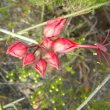
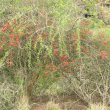
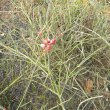
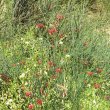
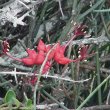


Comments
black storm root
An Ottaqwa herbalist told me last week that his people use it to dispel or exorcise negative introjects
Discuss this plant
Share knowledge, ask a question or give an experience.